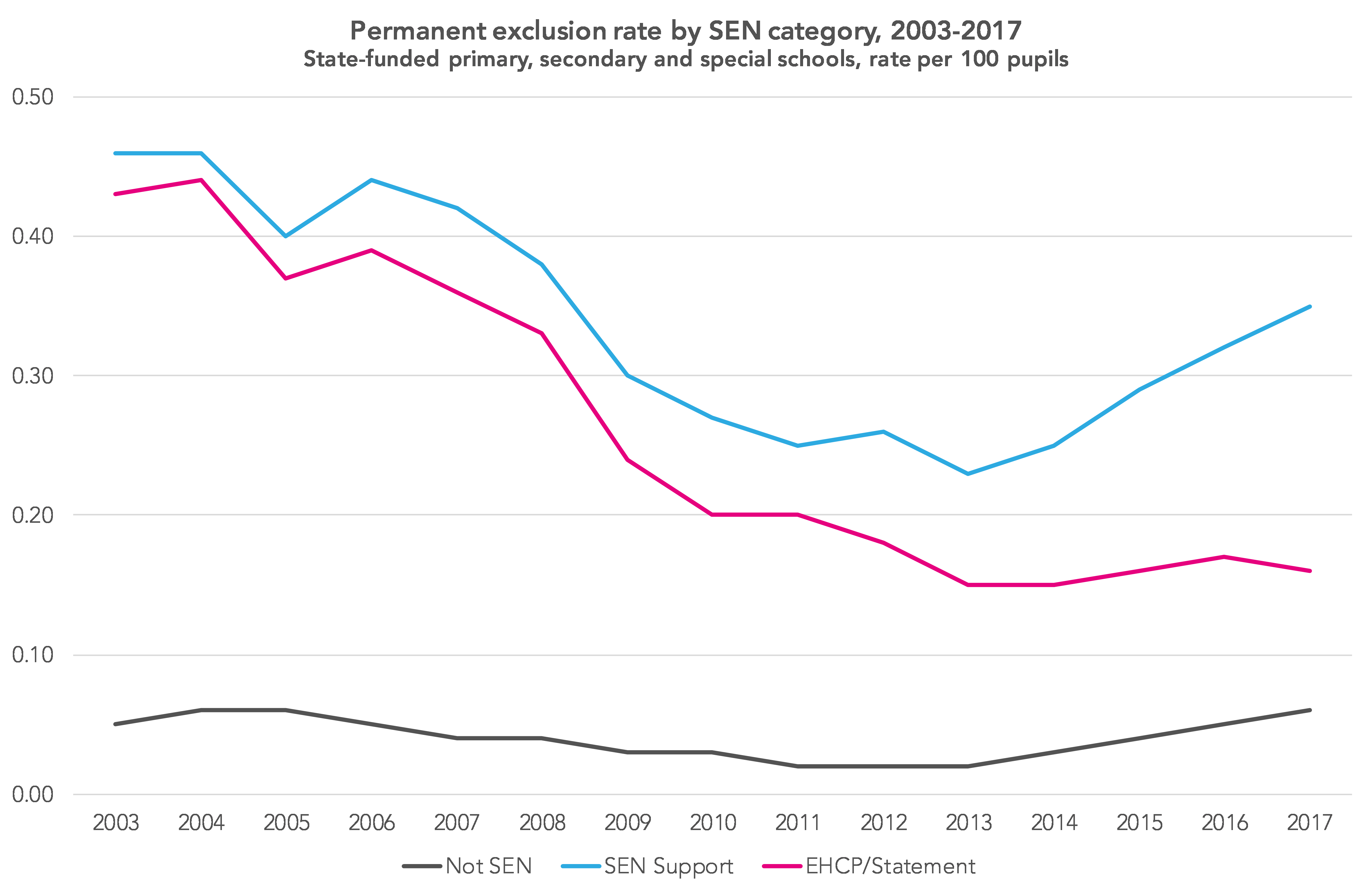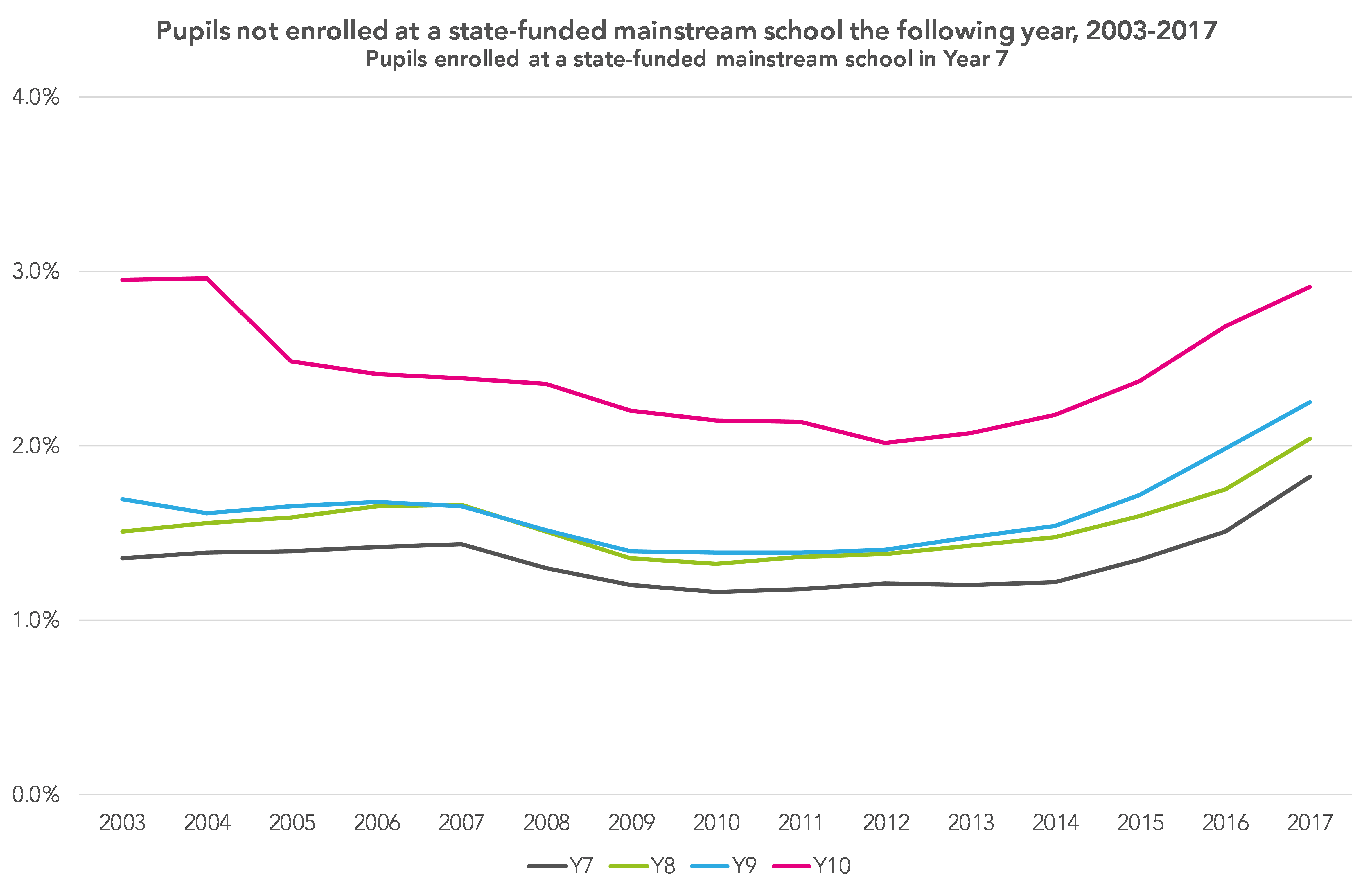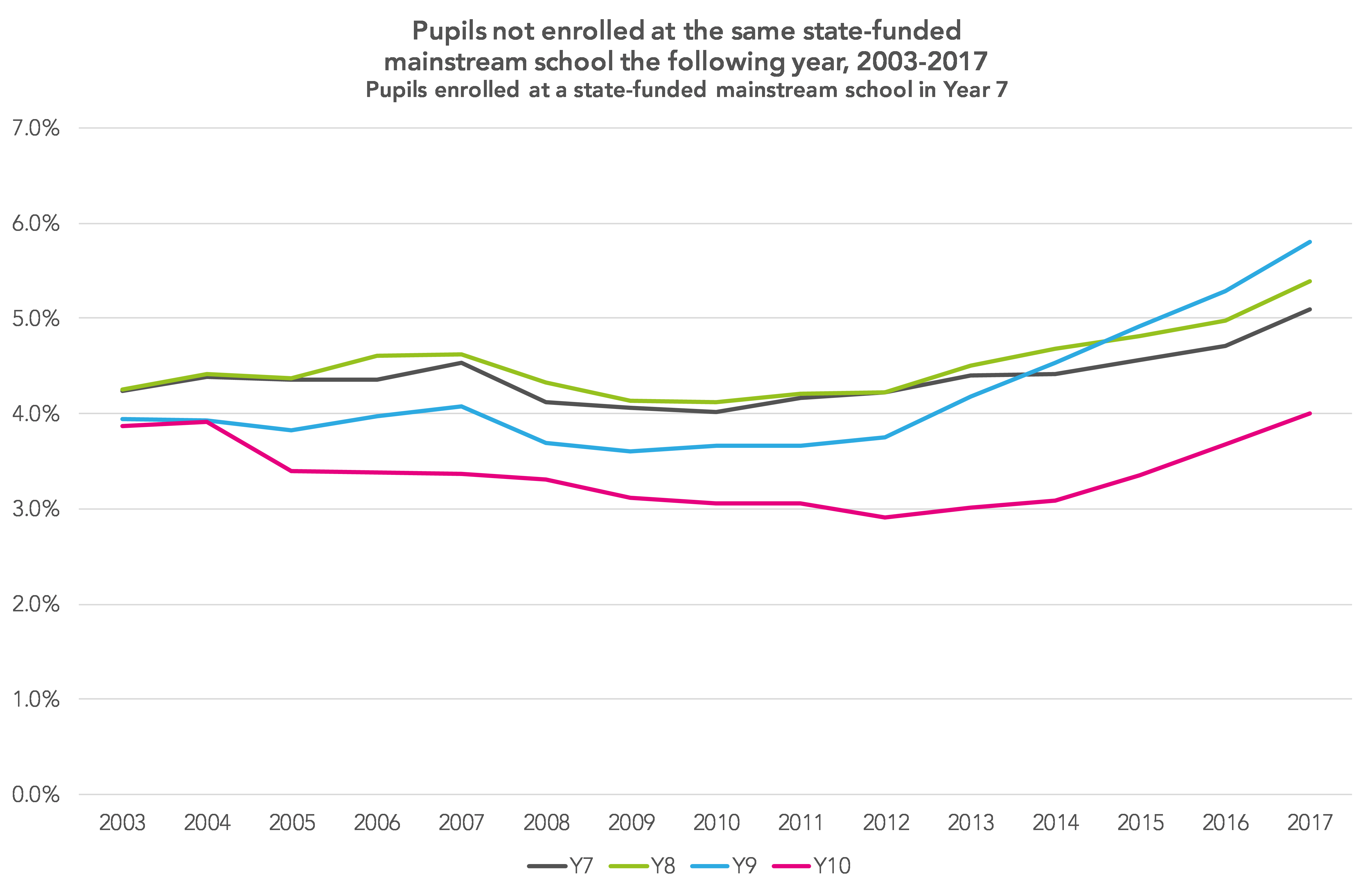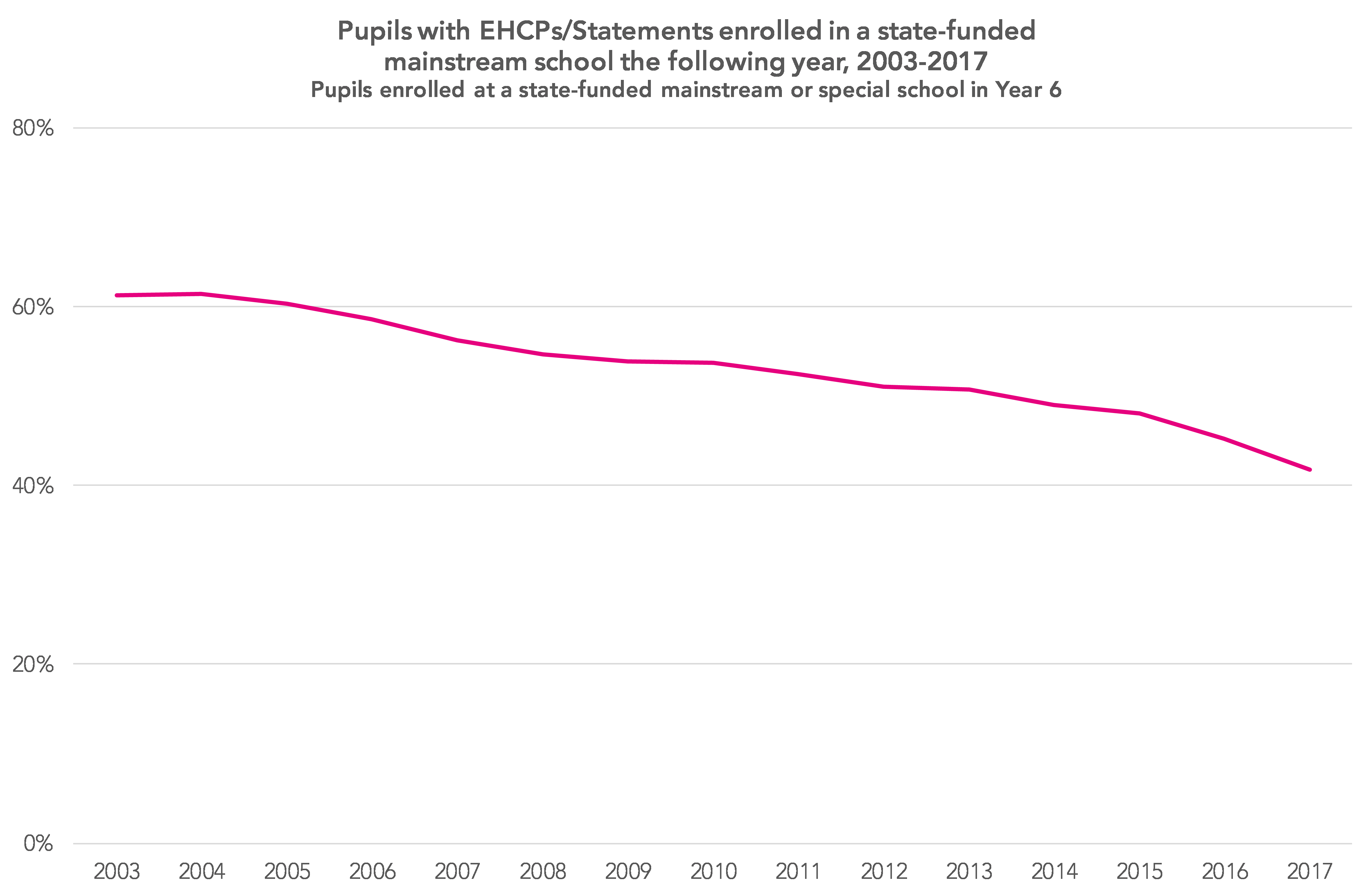The long-awaited Timpson Review was finally published this week.
Among other things, it called for a reduction in exclusions and measures to tackle off-rolling.
Neither is a new phenomenon, but pupils with special educational needs (SEN) appear to have been disproportionately affected by both in recent years.
Permanent exclusions
National statistics show that the rate of permanent exclusion in secondary schools fell steadily between 2006 and 2011 as a result of concerted government action [PDF] but has been increasing steadily since 2013.
Pupils with special educational needs but without a SEN Statement or education, care and health plan have been particularly affected since 2014, as the chart below shows. Unfortunately, exclusion statistics just for secondary schools were not published prior to 2012, so the chart shows the exclusion rate for all schools.
The exclusion rate for pupils without SEN has not changed much between 2003 and 2017. The rate among pupils with EHCPs/statements has declined substantially, but the rate among pupils with special educational needs met by SEN Support fell substantially between 2003 and 2013, since when it has been increasing.
Off-rolling
No-one really knows how many pupils really have been ‘off-rolled’ – removed from a school roll in circumstances where the school’s best interests trump those of the pupil.
Nonetheless, there are things that can shed some light on the issue. In our Who’s Left series, we looked in particular at pupils who have left the state-funded system.
Meanwhile, colleagues at the Education Policy Institute have come at it from a different perspective by trying to identify “unexplained school exits”, not just those that result in pupils leaving the system.
If we first look at moves out of the mainstream system (e.g. to special schools, alternative provision, home education, emigration and other destinations), we see increases in recent years (from 2014 in particular) following falls in previous years. Pupils in Year 10 are the most likely to be lost from the system.
Secondly, we can look at pupils enrolled at state-funded mainstream schools who leave, but this time including those who move to another mainstream school – shown on the chart below. (Pupils who make an expected transition, e.g. from middle to high school, are not included.)
This chart also shows that moves have been increasing in recent years. Year 10 pupils are actually less likely than other year groups to move schools and there has been a marked increase in Year 9 leavers since 2012 with the introduction of university technical colleges and studio schools.
As with exclusions, pupils with SEN have always been more likely to leave state-funded mainstream schools than other pupils, as the chart below shows, but this rate has increased in the last few years.
These charts suggest that pupil moves are increasing generally. We know that a small part of this will be due to more school choices being open at age 14. But no-one knows with any certainty what effect emigration is having.
We’ve written previously about how the number of pupils with EHCPs (or statements of SEN) have been falling in mainstream secondary schools. In addition, it seems that the rate at which they have been leaving mainstream schools has been increasing, particularly since 2015.
What is more, if we look at Year 6 pupils with statements/EHCPs attending state-funded schools (mainstream and special), we see that the percentage attending a mainstream school in Year 7 has been falling for many years and more quickly since 2015, as the chart below shows. This would tend to support the view that schools are now cutting places for pupils with SEND.
The declining numbers of pupils with EHCPs/Statements may of course mean those who do still have them have greater needs, affecting whether these pupils stay within mainstream settings.
Conclusion
There have always been permanent exclusions and pupils leaving state-funded mainstream schools.
However, both have started to increase in recent years and pupils with SEND have been particularly affected.
It may be a coincidence, but increases in exclusions and pupil movements appear to have started since the reforms to SEND funding in 2013 [PDF]. These were subject to further consultation and reform in 2017.
And last week, the Secretary of State for Education launched a call for evidence into funding for pupils with SEND or who require alternative provision.
A detailed study into the consequences of SEND funding reforms on admissions and enrolments seems badly needed.
Want to stay up-to-date with the latest research from FFT Education Datalab? Sign up to Datalab’s mailing list to get notifications about new blogposts, or to receive the team’s half-termly newsletter.













Hi Dave
I have met you a couple of times and follow your articles with interest. They are enormously helpful – thank you.
This work is very timely
Increases also align to a significant period of austerity and a decline in external service to support children, families and schools.
Children not securing EHCPs probably doesn’t reflect a reduction in need just an increase in children at school support
Given challenges to school budgets, potentially reduced staff in schools in recent years, a period of Ofsted inspection guidance that placed results pressures above all else meaning the service to communities and inclusion of children could be a direct factor in an adverse inspection (results and over stretched staff given complex needs) , increased financial challenges for families and reduced external services (not including impending reductions). We have not permanently excluded a child but it has been close.
There are also tensions between keeping a child in school with extreme challenges or complications; welfare of other members of the school community; staffing costs and personal impact of separation or isolation; use of APC option given increased safeguarding risks. There are no easy answers for the increasing numbers of vulnerable children especially in one of the most challenging period of education that I have experienced.
Thanks for your work on this.
Andrew